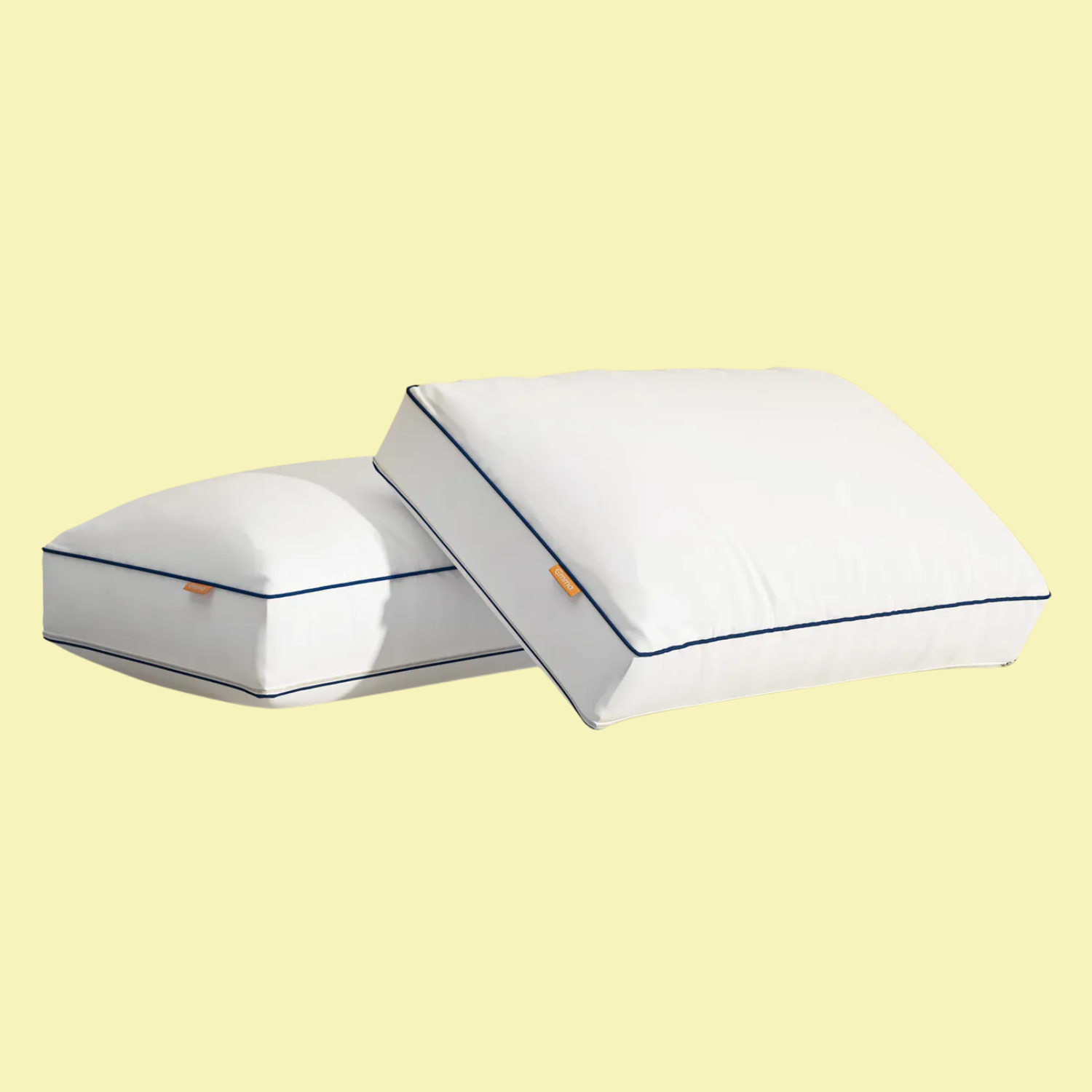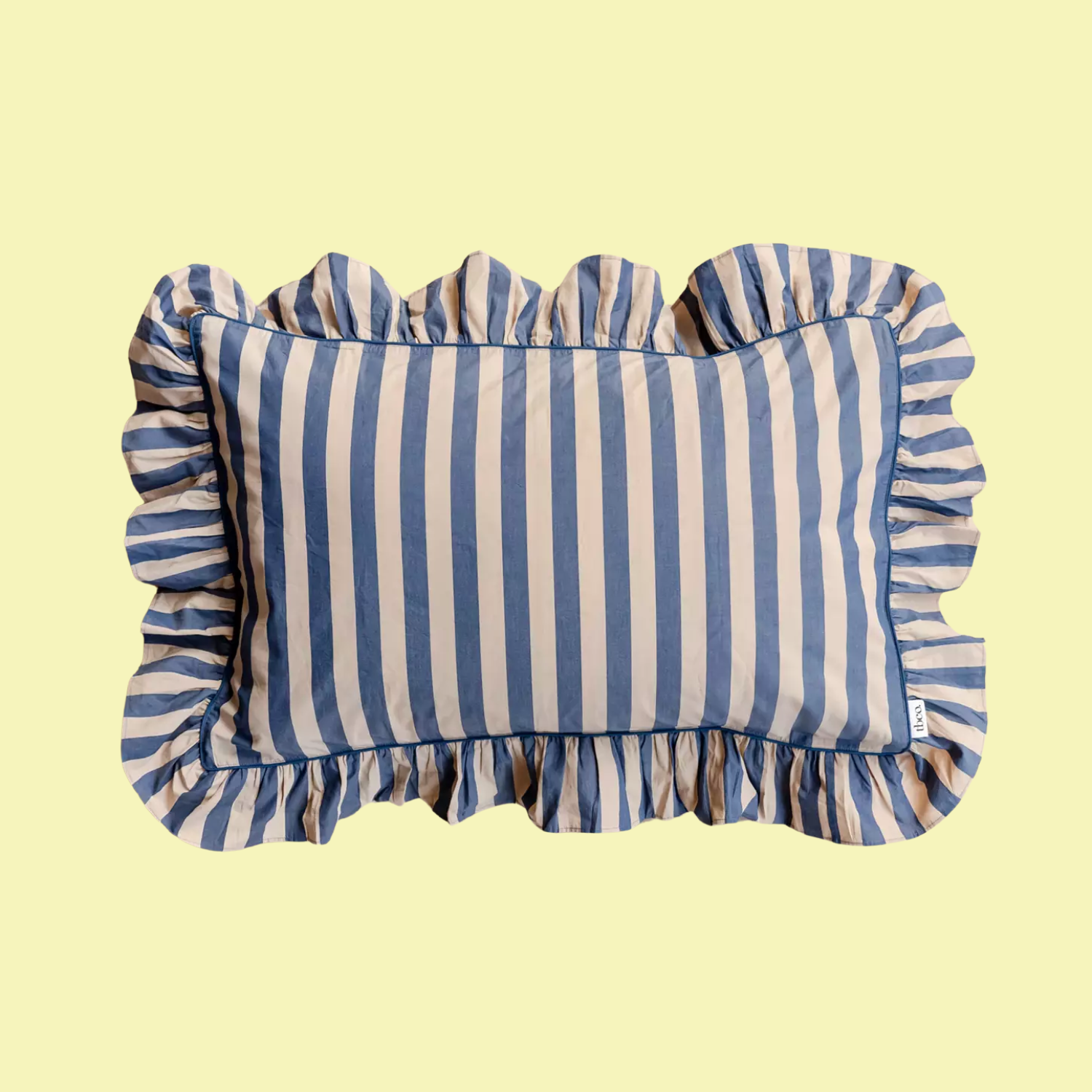How Often Should You Replace Your Pillows? Sleep Experts Urge You Not to Ignore the 'Expiry Date' on This Bedding Essential
As a bedding accessory that you use every single day, maybe multiple times a day, refreshing your pillows is key


Arguably, I'd say that pillows are the most important part of any good bedscape. Considering you rest your head on it every single night, or maybe even during the day (no judgment), these sleep accessories should be in tip-top shape.
And in the course of learning how to sleep better, I have understood that pillows don't always get refreshed as often as expected. These supportive sleep accessories, like any other part of your bedscape, have a valid shelf life, and experts say it could be as little as a year.
So, if you can't remember the last time you brought new pillows into your bedroom, it might be time to treat yourself now. But just for good measure, let's discuss the exact turnaround and why this spruce is so important.
How Often Should You Replace Your Pillows?

Dr. Leah Kaylor, sleep expert and clinical psychologist, tells me that most pillows should be replaced every one to two years. And while that might seem like a fairly quick expiry, there are some understandable reasons to back it up.
"Over time, pillows lose their shape and support, which can strain your neck and spine," she explains. "They also collect sweat, skin cells, oils, and dust mites — all of which can trigger allergies and affect sleep quality."
So, in order to truly master sleep hygiene, this is the timeframe you should abide by to keep your bed in a healthy and cozy condition.

Firmness: Medium
We love the Simba Hybrid Luxe Mattress, and these pillows are no less comfortable.
Dr. Leah Kaylor is a sleep expert and a clinical and prescribing psychologist at the Federal Bureau of Investigation. She has also written five book chapters and over 15 peer-reviewed journal articles. She has spoken nationally and internationally to law enforcement officers on topics such as the human stress response, trauma, EMDR, sleep/nightmares, taking care of one’s mental health when working with CSAM, wellness, and resilience.
How Does the Pillow's Material Affect This?

Christina Heiser, content director at Saatva, also agrees with following this general rule of thumb. However, she explains that the type of pillows you choose impacts how long they last.
The Livingetc newsletters are your inside source for what’s shaping interiors now - and what’s next. Discover trend forecasts, smart style ideas, and curated shopping inspiration that brings design to life. Subscribe today and stay ahead of the curve.
Down and Down Alternative: "These pillows typically last one to two years. They compress more quickly but can be machine-washed, which helps extend their lifespan," she advises.
Memory Foam and Latex: "This pillow type often lasts two or three years because they’re denser and more durable, but they usually can’t be machine-washed — only spot cleaned."
Synthetic Fill: And lastly, she explains that any pillow with a synthetic filling tends to wear out fastest, usually within a year, as the fibers break down and clump.
Christina Heiser is the content director at Saatva, the Smarter Luxury Sleep Company. She is a highly experienced content marketer, writer, and editor with over a decade of experience working with top media publications and brands, including Everyday Health, Women's Health, L'Oreal, Vitamin Shoppe, A Sweat Life, and Saatva. She often reports on improving sleep quality and other health and wellness advice.
How Do You Know When You Need a New Pillow?

Old, worn-out pillows could contribute to trouble sleeping through the night. So, it's important to look out for signs that your current pillows need to be retired.
"If your pillow looks flat, lumpy, or won’t spring back when folded in half, it’s time for a replacement," says Leah. "Waking up with neck or shoulder pain, or constantly fluffing your pillow to get comfortable, are also red flags that it’s no longer supporting you properly."
Comfort aside, Christina tells me that some more serious signs could reflect the need for new pillows. "Sneezing or allergy-like symptoms caused by dust mite buildup is another indicator," she notes. "And if you happen to spot any noticeable discoloration, even after washing, you need a fresh set."
What Are the Risks of Not Changing Your Pillow?

According to Christina, hanging onto an old pillow can compromise both sleep quality and health. "Prolonged exposure to sweat and bacteria on old pillows can create an unpleasant and unhygienic sleep environment," she explains.
"Plus, poor spinal alignment from lumpy pillows may lead to chronic neck or back pain, while accumulated dust mites and allergens can cause congestion, watery eyes, and sneezing."
So, choosing the perfect pillow and replacing your old ones every few years is more than just a design choice. It ties into wellness and the overall hygiene of your bed.
And this way, you can move past aesthetics and choose new pillows based on the best position for sleep, too. For instance, this Latex King High Loft Pillow from Saatva, available on Amazon, is a great choice for side sleepers.
Don't Forget to Refresh Your Bedding, Too
FAQs
How to Make Your Pillow Last Longer?
"In order to make your pillows last longer, you can use a protective pillow cover under your pillowcase to block sweat and oils," says Leah. "Wash pillowcases weekly and the pillow itself (if machine-washable) every few months. Fluff it daily to restore shape, and keep it out of direct sunlight to prevent material breakdown."
This pack of two Teflon Stain Resistant Pillow Protectors from Dunelm will give your pillow an added layer of comfort, while also keeping your pillows in prime condition for long.
If you dream of the plush pillows from your last vacation away, our guide to the types of pillows used in hotels will bring that luxurious coziness right into your own sleep space.

Amiya is a Home Wellness Writer at Livingetc. She recently graduated with a Masters Degree in Magazine Journalism from City, University of London, and has lent her words to beauty, fashion, and health sections of lifestyle publications including Harper’s Bazaar and Women’s Health. Her experience as a research analyst has equipped her with an eye for emerging trends. When she’s off the clock, she can be found reading, listening to music, or overanalyzing her latest Co-Star update.





